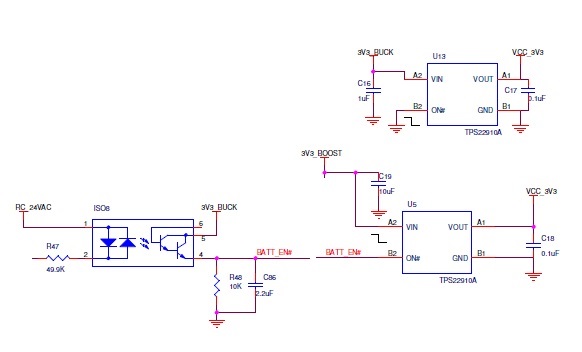Hi ,
I have a Power multiplexing requirement with 2 Power sources and 1 output
Primary source is AC-DC rectified 3.3V using Buck.
secondary source is Alkaline battery which connected to TPS61291 boost converter whose voltage will vary from 1.8 to 3.3V
Load requirement is 3.3V@210mA Max and decaps value is around 30uF at load.
When AC source is present,the system load should be supplied by AC and should switch to battery in case of AC absence.
We have used 2 load switches TPS22910A.
Enable pin of load switch connected to AC source is by connected to GND and by default enabled.
Enable pin of Load switch connected to boost source is connected to AC detection logic using AC opto coupler to enable Load switch 2 before 3.3V completely shuts due to input capacitor and output cap hold time.
Could you please verify and suggest any modifications to attached circuit to enable smooth transition for 1.8V-3.3V input range of load switch2 ?
Will there be any problem during transition when Load switch input voltage is 3.3V and Load switch2 input voltage is 1.8V?


